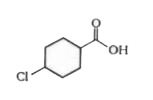Among alkali matals negative electrode protential of lithium is highest or lowest ?
To determine whether the negative electrode potential of lithium among alkali metals is the highest or lowest, we can follow these steps:
Step 1: Understand Negative Electrode Potential
Negative electrode potential (E°) refers to the tendency of a metal to be reduced. A more negative E° value indicates a greater tendency to lose electrons (oxidation), while a less negative or positive value indicates a greater tendency to gain electrons (reduction).
Hint: Recall that reduction potential indicates how easily a species can gain electrons.
Step 2: Identify the Alkali Metals
The alkali metals include lithium (Li), sodium (Na), potassium (K), rubidium (Rb), and cesium (Cs). These metals are known for having one electron in their outermost shell (ns¹ configuration).
Hint: Remember that alkali metals are found in Group 1 of the periodic table.
Step 3: Analyze the Trends in Alkali Metals
As we move down the group from lithium to cesium, the atomic size increases, and the ionization energy decreases. This means that it becomes easier for these metals to lose their outermost electron.
Hint: Consider how atomic size and ionization energy affect the reactivity of metals.
Step 4: Compare the E° Values
Lithium has a relatively high ionization energy compared to the other alkali metals, which means it is less willing to lose its electron. Therefore, lithium has a more negative reduction potential compared to the other alkali metals.
Hint: Think about how ionization energy relates to the ability of a metal to lose electrons.
Step 5: Conclusion
From the analysis, we can conclude that lithium has the lowest negative electrode potential among the alkali metals. This is because it is less likely to be reduced compared to the other alkali metals, which have lower ionization energies and thus higher tendencies to lose electrons.
Final Answer: The negative electrode potential of lithium is the lowest among the alkali metals.
---
Negative electrode potential (E°) refers to the tendency of a metal to be reduced. A more negative E° value indicates a greater tendency to lose electrons (oxidation), while a less negative or positive value indicates a greater tendency to gain electrons (reduction).
The alkali metals include lithium (Li), sodium (Na), potassium (K), rubidium (Rb), and cesium (Cs). These metals are known for having one electron in their outermost shell (ns¹ configuration).
As we move down the group from lithium to cesium, the atomic size increases, and the ionization energy decreases. This means that it becomes easier for these metals to lose their outermost electron.
Lithium has a relatively high ionization energy compared to the other alkali metals, which means it is less willing to lose its electron. Therefore, lithium has a more negative reduction potential compared to the other alkali metals.
From the analysis, we can conclude that lithium has the lowest negative electrode potential among the alkali metals. This is because it is less likely to be reduced compared to the other alkali metals, which have lower ionization energies and thus higher tendencies to lose electrons.
Topper's Solved these Questions
- ALCOHOLS, PHENOLS AND ETHERSBOOK - AAKASH INSTITUTE ENGLISHCHAPTER - ALCOHOLS, PHENOLS AND ETHERSEXERCISE - Try yourself
5 Videos
- ALCOHOLS, PHENOLS AND ETHERSBOOK - AAKASH INSTITUTE ENGLISHCHAPTER - ALCOHOLS, PHENOLS AND ETHERSEXERCISE - Exercise
40 Videos
- ALCOHOLS, PHENOLS AND ETHERS BOOK - AAKASH INSTITUTE ENGLISHCHAPTER - ALCOHOLS, PHENOLS AND ETHERS EXERCISE - Try Yourself
5 Videos
Similar Questions
Among the alkali metals, the most abundant metal is
View SolutionA current of two amperes is flowing through a cell of e.m.f. 5 volts and internal resistance 0.5 ohm from negative to positive electrode. If the potential of negative electrode is 10 V , the potential of positive electrode will be
View Solution
Knowledge Check
Assertion:Lithium has the lowest electrode potential.
Reason: Lithium ion is the strongest oxidising agent.AIf both assertion and reason are true and reason is the correct explanation of assertion .BIf both assertion and reason are true but reason is not the correct explanation of assertion .CIf assertion is true but reason is false .DIf both assertion and reason are false .Select the acid with the highest Ka (i.e., lowest pKa )
A B
B C
C D
D
The alkali metal having highest melting point is
View SolutionThe cranial capacity was highest among the:
View SolutionAmong the alkali metals, which element has the highest reducing power ?
View SolutionConsider the following statements
1. Cs+ ion is more highly hydrated than other alkali metal ions
2. Among the alkali metals Li, Na , K and Rb, Lithium (Li) has the highest melting point
3. Among the alkali metals , only lithium form a stable nitride by direct combination .
O these statements
View SolutionIn group 1 (alkali metals), sodium is more reactive than lithium, or lithium is less reactive than sodium. Give reason.
View SolutionAmong the alkali metals, which element has the lowest ionic radius ?
View Solution
